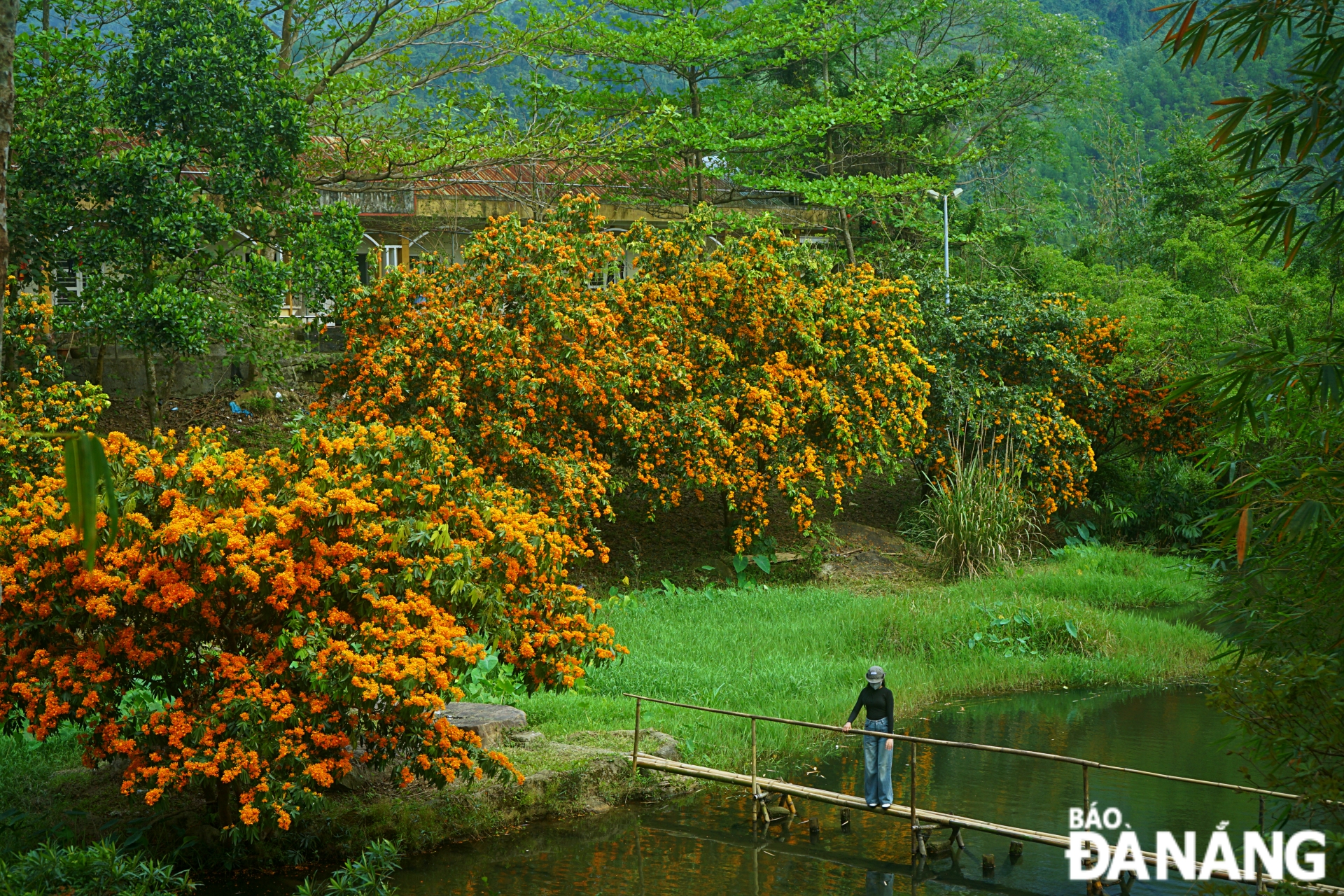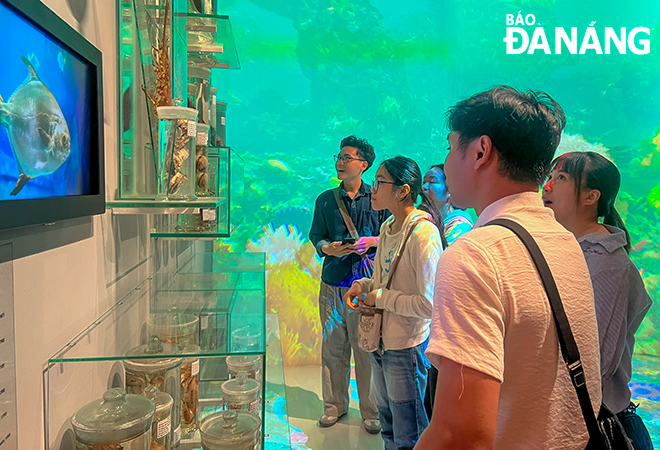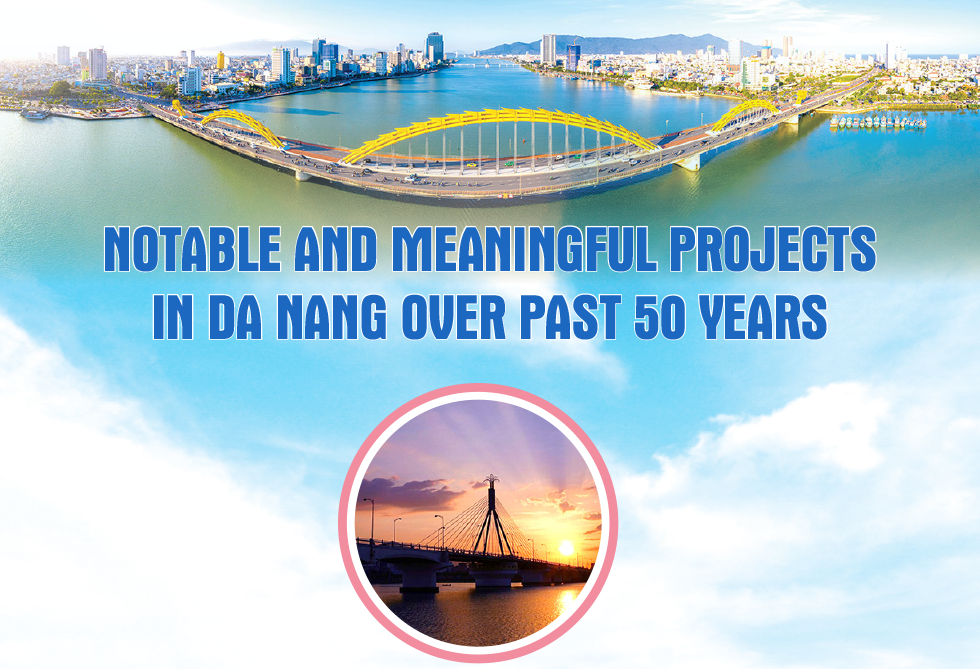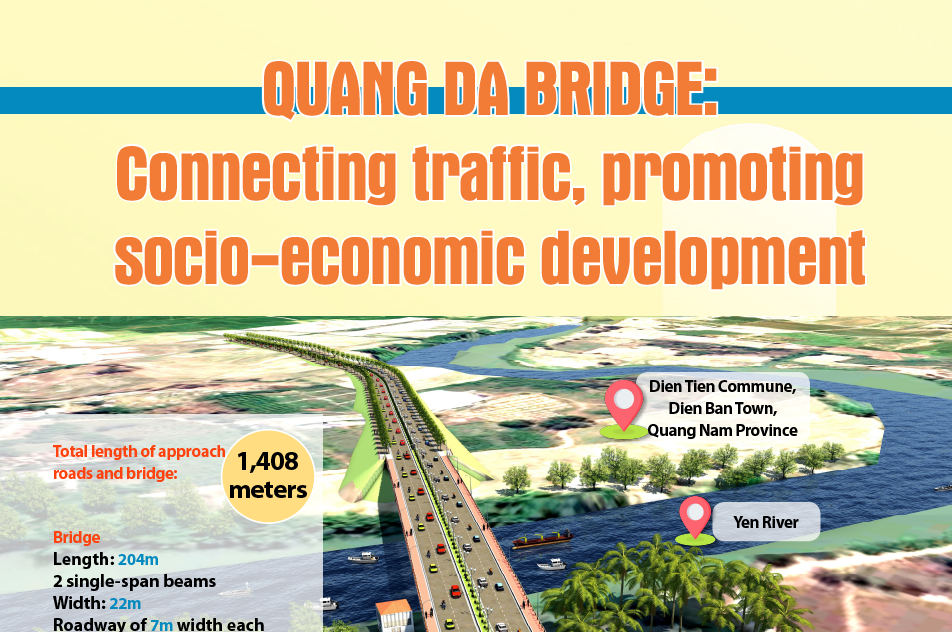Da Nang IPs go green with trees-covered space
No emissions, no environmental pollution with green areas increasingly expanding are the goals that many industrial parks (IPs) across Da Nang are aiming for so that these working sites are not just places to create material wealth for the economy economic but also a pioneer in preserving the living environment.
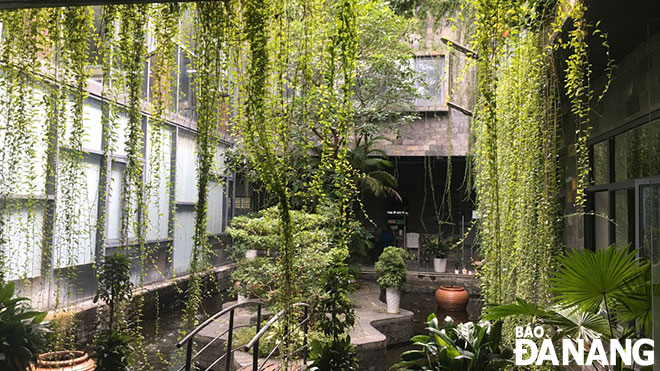 |
| Green space like an ecological garden is observed at the Da Nang Branch of the Long Khai Company. Photo: KHANH HOA |
A true “eco-garden”
Visiting the manufacturing factory of the Da Nang Branch of the Long Khai Company specialising in textile and garment processing in Son Tra District-based Da Nang IP, the first impression is that a green, clean, beautiful space with rows of lush green trees, taller than people's heads, are planted around the factory campus.
Going deep inside are bougainvillea trees with lush branches and leaves, blooming brightly in every corner of the yard.
Many other types of plants also bud, bloom, and bear fruit such as peony, blue bean, thorny palm tree, sesame buds, bamboo, star fruits, kumquat, dwarf and areca palms and polyscias fruticosa.
Dozens of plant varieties, selected to suit the soil, under the meticulous care of the guardians over the past 10 years, have created a true ‘ecological garden’ within the factory campus of Long Khai Company branch.
The company's green production zone model is considered one of the typical examples in Da Nang Industrial Park today.
Ms. Truong Thi Nhu Quynh, the Head of the Company's Business Management Department, happily said: “The factory covers an area of 7,122m2, with green trees accounting for about 35%. A green workspace and green factory are the goals and ideas we formed right from the moment we started building the factory. Every day when I go to work at the company, I breathe fresh air, see green trees, flowers and fruits. My heart also feels more relaxed and happier”.
Greening factories and IPs not only create green landscapes and increases aesthetics, but also contribute to improving the ecological environment and preventing pollution.
Plants grown in factories and IPs provide large amounts of oxygen, helping to regulate the air in the workplace, thereby helping workers relax and reduce work stress. Planting trees in factories and businesses in industrial zones also requires proper technique, beauty and luxury.
With more than 2,500 employees, the Daiwa Viet Nam Co., Ltd., located in the Hoa Khanh IP, Lien Chieu District, is one of the large manufacturing factories located in the city with an area of 160,000m2.
Right from the first days of construction in 1997, the company’s leaders have focused on creating green space for the factory by planting dozens of woody trees such as mangos, acacias, jackfruit and almonds with shady coverage.
In addition to ‘greening’ the factory, to harmoniously solve the problem of production and environmental protection, over the past years, the company has planted hundreds of trees along the fence surrounding the factory area.
In order to reduce gas emissions into the environment, the company has installed a circulating water system to lower the temperature in the factory to 2-3oC lower than the ambient temperature, reused wastewater for production and installation, set a timer system for the entire air exhaust fan system to turn off simultaneously when it's time to rest.
“For many generations of workers who have worked for a long time at the Daiwa Viet Nam Co., Ltd., rows of decades-old trees have become a commemorative part of the factory's development journey. We view it as an asset that needs to be preserved”, emphasised Mr. Nguyen Van Phu, the Director of the Daiwa Viet Nam Co., Ltd.
Development associated with environmental protection
Over the past time, IPs have affirmed their roles and made important contributions to the socio-economic development process, creating jobs and bringing income to tens of thousands of workers, contributing to improving productivity, competitive force.
They are also an indispensable factor to accelerate the process of industrialization, modernization, technological innovation, promote integration, and improve the position of localities and countries in the global value chain.
However, along with rapid IP development, a large amount of natural resources are exploited and waste from production and consumption is increasing.
For that reason, focusing on preserving the environment and greening production, moving towards green and eco-IPs is in line with the general development trend.
With many efforts exerted to overcome environmental limitations and inadequacies, in recent years, IPs have paid more attention to environmental protection, promoting the planting of trees around the fences of manufacturing companies. There is also a preferential mechanism for investors when proactively planting more trees around production areas, forming industrial symbiotic links between businesses.
One of the policies to contribute to preserving the environment that the city has seriously implemented over the past few decades is to not consider accepting investment projects with outdated production technology that generates many harmful substances.
At the same time, projects, production and business establishments that generate waste or other impacts on the environment must prepare environmental records and submit them to competent authorities for approval before going into operation according to the law.
As reported by the Authority of Da Nang Hi-tech Park and Industrial Zone, since the beginning of this year, 1,000 perennial, well-adapted, and densely shaded trees have been grown in the Da Nang Hi-tech Park and IPs, hereby contributing to environmental protection, improving landscape and mitigating climate change.
“Currently, the Da Nang Hi-tech Park and 100% of the local IPs have built rainwater drainage systems separate from wastewater and completed centralised wastewater collection systems and treatment stations, ensuring centralised wastewater treatment stations. The systems operate stably and wastewater treatment meets Vietnamese standards QCVN 40:2011 before being discharged into the environment. We also strengthen capacity building to respond to climate change, reduce greenhouse gas emissions, preserve biodiversity, encourage research activities, and apply natural solutions in the construction and operation of projects and factories to preserve biodiversity," said Ms. Doan Thi Ngoc Thuy, the Head of Environmental Management Department, the Authority of Da Nang Hi-tech Park and Industrial Zones.
Reporting by KHANH HOA - Translating by A.THU


